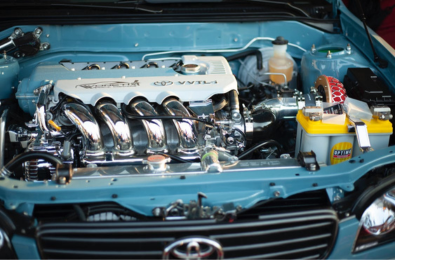Important Considerations for Making Sure Quality and Durability in Utilized Engines
When taking into consideration the purchase of an utilized engine, ensuring its quality and durability needs a multifaceted strategy. Upkeep history is an essential factor, as it supplies insight into the engine's past treatment and possible future dependability. Past documents, a comprehensive examination of physical components-- such as belts, pipes, and seals-- can expose surprise issues. Efficiency testing is additionally essential, providing a snapshot of the engine's functional efficiency. Comprehending the nuances of these analyses and their implications can be complicated. What are the crucial methods that can be employed to navigate this elaborate analysis procedure efficiently?
Engine Background Examination
In the realm of used engines, a complete engine background evaluation is critical to making sure high quality and reliability. Understanding an engine's past can offer vital understandings into its performance abilities and potential future long life.
Engines that have actually gone through significant repairs might have underlying concerns that can resurface. Analyzing the engine's mileage can offer as an indication of wear and tear. An engine made use of largely for long-distance freeway driving may be in far better condition than one subjected to constant stop-and-go city web traffic.
Basically, an extensive investigation right into an engine's background is crucial for making educated buying choices. used engines for sale.
Comprehensive Evaluation Overview
While understanding an engine's background offers beneficial context, a comprehensive examination is the next action to ensure its present condition lines up with historical data. The inspection must start with a visual evaluation, looking for indicators of leaks, deterioration, and unusual wear. Inspect the outside for oil spots or coolant marks, which might indicate underlying concerns.
Next, evaluate the engine's placing system for any kind of loosened screws or irregularities that might affect efficiency. Pay close interest to the condition of belts and tubes, as these elements are important for optimum engine functionality. Analyze for splits, fraying, or any kind of signs of wear and tear.

Determining Use and Tear
Acknowledging signs of deterioration is important for evaluating a used engine's longevity and integrity. It includes a careful exam of numerous engine elements to determine their existing state and prospective future performance. Common indications consist of visible deterioration, which can affect metal components and jeopardize architectural stability. Rust on or around the engine block, cylinder heads, and exhaust manifolds is especially worrying.
An additional critical facet is examining the engine's seals and gaskets. These elements are necessary for maintaining appropriate pressure and stopping liquid leaks. Proof of oil leakages or worn gaskets typically suggests degeneration, possibly resulting in a lot more severe concerns if not resolved quickly. Furthermore, uncommon noises during engine procedure, such as knocking or ticking audios, may suggest inner damages or excessive wear on moving components like pistons or bearings.
The problem of belts and tubes is just as vital, as they play an important function in the engine's general feature. Fractured or torn belts and fragile tubes are signs of aging that could lead to engine failure if Go Here ignored. Examining the oil condition and filter can provide insights right into previous maintenance methods, as filthy oil or stopped up filters suggest overlook and accelerated wear.
Efficiency Testing Basics
Evaluating the wear and tear of engine components establishes the phase for a detailed evaluation through efficiency screening. Performance screening functions as a crucial measure in determining the functional stability of an utilized engine. By imitating real-world problems, it examines the engine's capability to deliver power successfully and dependably. Key metrics consist of horse power, torque, fuel performance, and discharges levels. This information offers beneficial understandings into the engine's existing performance and aids determine potential concerns that may not be instantly noticeable.
Utilizing dynamometers is a common approach in efficiency screening. These devices gauge the engine's result throughout numerous conditions, using an in-depth profile of its capability. Furthermore, on-road testing enhances dynamometer assessments by observing engine habits under typical driving situations, guaranteeing it meets the required criteria for both safety and effectiveness.
Advanced diagnostic tools additionally boost the capability to identify underlying concerns. These tools evaluate engine monitoring systems, identifying faults in digital parts that might influence performance. Comprehensive testing not only validates the engine's functional status but likewise aids in projecting future upkeep demands. This guarantees the utilized engine can provide reputable efficiency over an extensive duration, hence optimizing its value and solution life.
Upkeep and Treatment Tips
Correct upkeep and care are critical to lengthening the lifespan of a used engine and ensuring its consistent performance. Regular oil changes are extremely important; making use of the manufacturer's recommended oil kind and quality can prevent excessive damage. In addition, oil filters must be changed simultaneously to preserve optimal lubrication and cleanliness within the engine.
Keeping an eye on fluid levels, consisting of coolant, transmission liquid, and brake fluid, is necessary. Making certain these liquids are at appropriate degrees helps avoid overheating and other mechanical concerns. Checking belts and hoses for signs of wear, such as splits or fraying, can avert potential failures that might result my review here in pricey repair work.
Routine evaluation of the air filter is likewise needed, as a clean filter guarantees effective air flow and burning, therefore maximizing engine efficiency. Stimulate plugs must be checked and changed when needed to keep efficient gas combustion and protect against engine misfires.
Lastly, routine analysis checks making use of expert devices can recognize possible problems prior to they become substantial troubles. By sticking to these maintenance and treatment suggestions, used engine owners can guarantee their engines continue to be reputable, reliable, and capable of carrying out more than an extensive duration.
Conclusion
